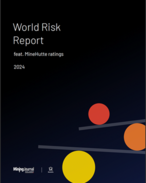This article is 11 years old. Images might not display.
The prototype of the CT rig was commissioned by the Adelaide-based Deep Exploration Technologies Cooperative Research Centre (DET CRC), established in 2010 to find more cost-effective methods of mineral exploration under deep, barren cover rock.
DET CRC CEO Professor Richard Hillis said the CT rig promised to reduce the time and expense associated with exploration drilling.
“The launch of the prototype CT rig comes at a vital time for the mining industry,” he said.
“More than ever, we need to find cost-effective methods of minerals exploration.
“Currently, 80% of Australia’s minerals production comes from mines that were discovered more than 30 years ago, yet more than 50% of Australia’s export income comes from mining.
“Indeed, based on current reserves, resources and rates of exploitation, half of Australia’s existing major non-bulk commodity mines could close down within seven to 18 years.
“By reducing the time and expense to find mineral deposits hidden under deep, barren cover rock, the CT rig will encourage more mineral exploration both in Australia and worldwide.”
Instead of drill rods, the CT rig uses a continuous reel of tubing that eliminates manual handling of drill rods, increasing safety and maximising the time the drill bit is at the bottom of the hole drilling.
The prototype rig uses steel tubing, but DET CRC will experiment with innovative tubing materials such as carbon fibre.
The rig is also much smaller and lighter than conventional drill rigs and will use a motor at the bottom of the hole as opposed to at surface, all greatly reducing the consumables costs and environmental impact.
Hillis said the CT rig would be combined with other technologies being developed by DET CRC, including downhole sensors and Lab-at-Rig technology, to further enhance the productivity of mineral exploration.
“The majority of Australia’s existing mines are located where mineralised basement rocks are outcropping or shallow,” he said.
“In order to ensure the future of mining in Australia, and in all heavily explored countries, new technologies must be developed to explore to greater depths in the vast, prospective areas where mineralised basement is hidden beneath deep, barren cover rocks.
“The CT rig has the potential to significantly lower the cost per metre drilled, which will enable companies to be more aggressive with their drilling programs and drill more holes."
Minex Consulting managing director Richard Schodde said a vibrant exploration scene was essential for the long-term future of the mining industry and new deposits continually needed to be found.
“Mining companies are under extreme pressure to lower costs and improve operating margins,” he said.
“Cutting back on exploration can save the company money in the short term – but at the expense of putting its long term security at risk.
“Junior companies, which make up nearly half of the total exploration spend in Australia have also had to cut back on exploration because of difficulties in raising equity from shareholders.
Schodde said investors were risk-averse and the exploration industry was generally not good at identifying and making the business case on the likely rewards from their exploration programs.
“The best way to ‘sell the story’ on the value of exploration is to demonstrate a major exploration success,” he said.
“The problem is that there haven’t been many significant discoveries in Australia in recent years. Most of the outcropping deposits in Australia have been found – and industry is having to progressively go under deeper cover.
“This means industry has to use indirect methods to discover the deposit and this is more expensive to do and riskier.”
Schodde said the CT rig could radically speed up the rate of target testing.
“The ability to learn as you go by getting instant feedback on the ore grade and mineral potential of the local area will help quickly guide the company to zero-in on the deposit,” he said.
“This is contrast to the current stop-start approach to exploration which requires several campaigns of work over several years to delineate the deposit.
“Company management know that ‘time equals money’.”
























